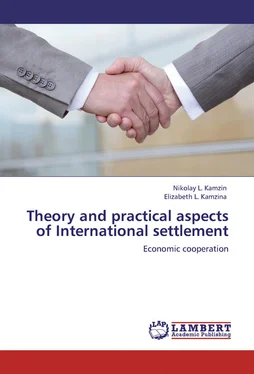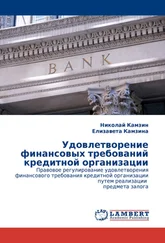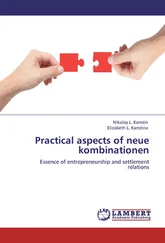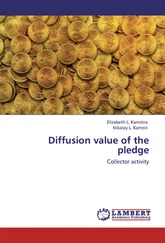The gold standard was based on the formalization of the countries of the gold content per unit of domestic currency liabilities of central banks buy and sell domestic currency in exchange for gold. Gold exchange standard based on the officially established fixed parities of currencies against the U.S. dollar, which in turn was convertible into gold at a fixed rate. The main features of the standard devising lies in the fact that countries can use any system of exchange rates of their choice – a fixed or floating, established unilaterally or through multilateral agreements. The IMF has the authority to oversee the development of exchange rates and arrangements for their establishment. Abolished the official price of gold, and eliminated its role as the official means of payment between the IMF and its members. As an additional reserve asset, special drawing rights (SDRs).
With the development of foreign economic relations and formed the world monetary system as a form of currency relations governed by the national currency laws and interstate relations. The main element of the monetary system of each country is its national currency [8] Киреев А.П. Международная экономика. В 2-х ч. – Ч. II. Международная макроэкономика: открытая экономика и макроэкономическое программирование. – М.: Международные отношения. 2001. – С. 40.
. Features of the world monetary system and principles of its construction are closely related to the structure of world economy. It is obvious that a change in its structure has evolved and the world monetary system and, consequently, are modified and improved its basic elements:
– the functional form of world money;
– terms of convertibility;
– modes of exchange rate parities and exchange rates;
– the level of foreign exchange regulation and the extent of foreign exchange restrictions;
– unification of the forms of international payments.
The development of the world monetary system is a spiral with a gap of several decades. In the domestic economy, the monetary systems have evolved from the gold coin standard to a gold bullion and gold exchange, and from him – a paper-credit treatment. Evolving global monetary system has moved to the next stage, called the Jamaican system. It was arranged by agreement of member countries by the International Monetary Fund (IMF) in 1976 in Kingston, Jamaica [9] Белоглазова Г.Н. Деньги. Кредит. Банки. – М.: Высшее образование. 2009. – С. 19.
, in which formed the basic principles of a new monetary system, embodied in April 1978 in the second amendment to the Articles of Agreement of the IMF. These principles, which are today, are as follows:
– the abolition of the official price of gold was legalized demonetization of gold, but, nevertheless, thanks to the real values of gold, followed by continued extraordinary role of world money and reserve assets;
– gold exchange standard was replaced by a standard SDR, which formally declared the foundation of currency parities, but in practice did not become a standard of value, the main payment and reserve funds;
– instead of a fixed exchange rate of the country officially since 1973, switched to a regime of floating exchange rates, but were able to choose a fixed or floating exchange rate;
– the IMF has the authority to supervise the development of hard currency and the establishment of agreements.
Problems of Jamaican currency system very quickly appeared in the imperfection of floating exchange rates. Moreover, the problems encountered have exacerbated the financial and currency crises. The need to coordinate national action for overcoming the crisis led global economic community to re-evaluate the role of international financial regulators to harmonize the policies of different countries in the field of monetary relations. William Shakespeare wrote: «If there be nothing new, but that which is, hath been before» [10] Shakespeare W. Shakespeare’s Sonnets. – Boston. Ticknor and Fields. 1865. P. – 65.
, was a question about the effectiveness of the regulatory activities of international monetary institutions, which in conditions of crisis in the global system has considerably decreased, forcing the governments of several countries in the band to do disruption reconstruction of the whole system of currency regulation.
The IMF has not coped with the task of predicting the crisis of early shocks. Although this program was developed jointly with the World Bank, IMF, passively watching the change in the macroeconomic cycle – the transition from boom to slower growth of bank lending in the financial market and detachment from the real economy, especially in developed countries, particularly the U.S., which led to the global financial and economic crisis [11] Красавина Л.Н. Концептуальные подходы к реформированию мировой валютной системы // ДЕНЬГИ И КРЕДИТ. – 2010. – № 5. – C. 56.
.
In economic theory, international monetary relations issues remain unchanged. Over the years, changing only the answers [12] Джеффри А. Фрэнкел Что актуально и неактуально в мире международных денег? // Финансы & Развитие. 2009. – Сентябрь.– С. 13.
. Like the philosophical notion of substance, dualistic in nature. The inner essence of a stable core and the outer reflection of it in our time, so all knowing “dig” to the bottom of the rod, and starts searching with the external reflection, effortlessly accessible to every listener.
To effectively solve problems of macroeconomic management, on the one hand, the actions of the Central Bank of the Russian Federation should be characterized by independence and consistency. On the other hand, measures in the monetary are a must be accompanied by adequate fiscal policies [13] Подколзина И.А. Некоторые актуальные проблемы российской денежно-кредитной политики в исследованиях европейских экономистов // ДЕНЬГИ И КРЕДИТ. – 2009. – № 8.– C. 69.
.
As rightly pointed out Frederic Bastiat «you cannot give money to some members of the community but by taking it from others» [14] Bastiat Frederic. The Bastiat collection. Volume I. – Auburn: Ludwig von Mises Institute. 2007. – P. 219.
cash equivalent because this is the existing opportunities, money is their “mirror image”, and, therefore, imperative redistribution of opportunity or the cost of moving simply changing the terms without affecting the sum.
Friedrich Hayek in his work «Denationalization of Money» [15] Hayek F.A. Denationalisation of money – The Argument Refined. – London: The Institute of Economic Affairs. 1990. – 144 p.
, brought the idea of the possible effect of providing entrepreneurs the possibility of emission of money, the value of which would be stable, which gave confidence to the calculations by contractors, in the absence of inflation, but this innovation cannot be realized, because of the contradictions of nation-building basics. Through its implementation of public budgets will suffer financial losses, there will be inefficient reallocation of public goods. And if all the international community is committed to a single, centralized currency, this concept is its centerline, while the idea of a stable value is very attractive.
Tabl. 1
The main stages of the global monetary system
Читать дальше












